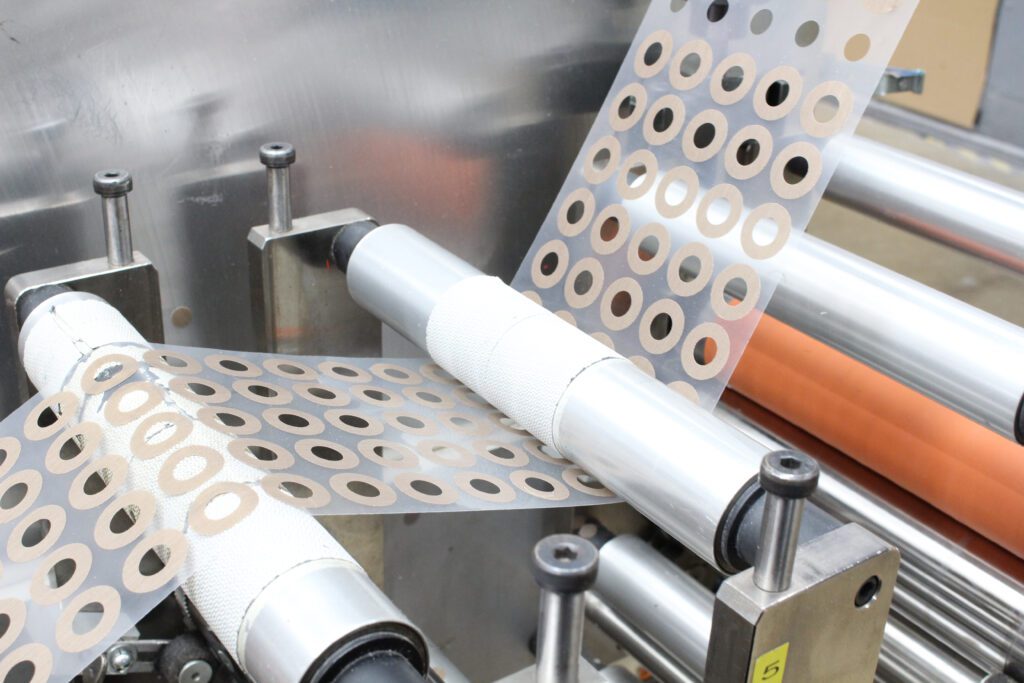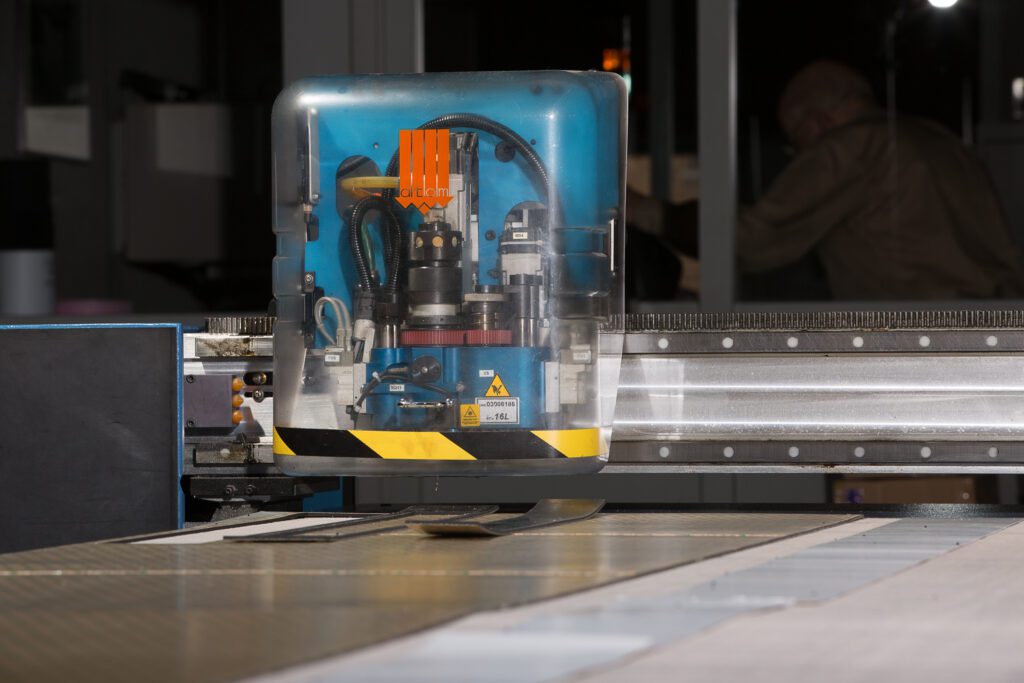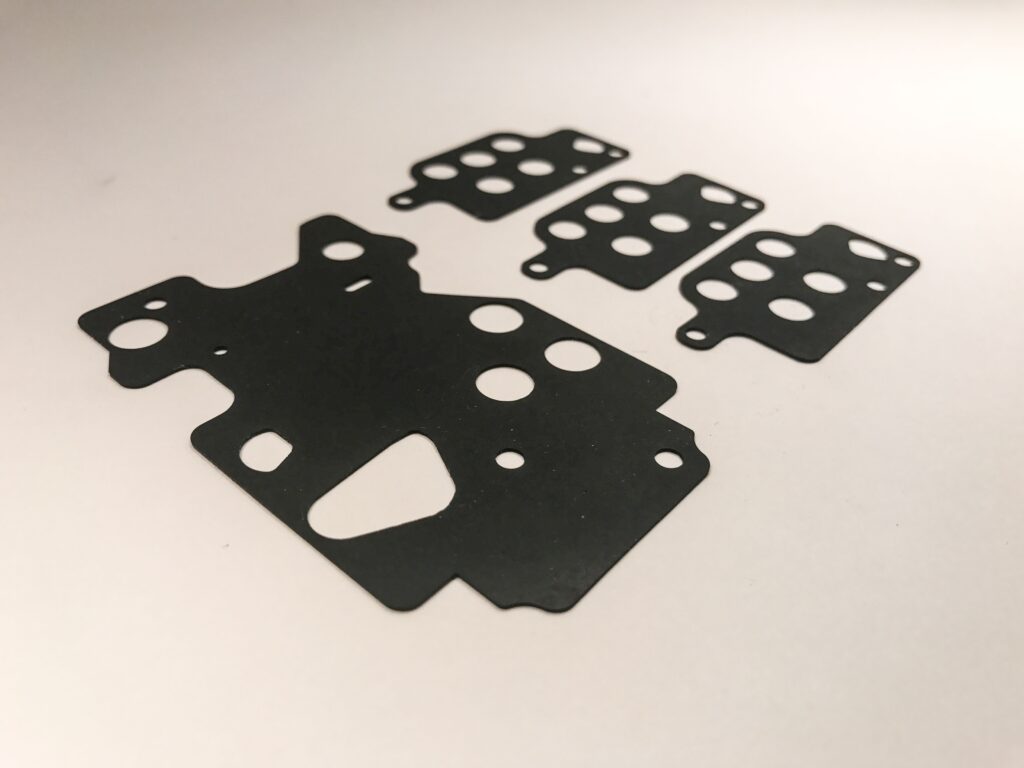Precision Die-Cutting Services
Die cutting is an SRP staple and specialty, the first and often best option for cutting non-metallic sheet products into mass-produced custom shapes. After laminating your chosen material with pressure-sensitive adhesive and removeable liner, die-cutting the converted material is the final step to creating a peel-and-stick gasket or seal for easy assembly.
Why Precision Die Cutting?
The metal die tooling cuts shapes from foams, rubber, plastics, films and fiber, without damaging and disrupting the properties of the material. Once a custom die is created, it’s a highly efficient and accurate method for medium- and large-scale production runs of foam and rubber parts.
Highly Repeatable & Efficient
Die cutting can replicate intricate details in components — over and over and over again and again — minimizing material waste.Maintains Tolerance Range
Meet the most stringent requirements with die cutting’s ability to reach a high percentage of part-to-part accuracy.Material Integrity
Unlike laser cutting and other die-less cutting methods, metal die cutting produces clean, sharp edges while minimizing concavity in foams, rubbers and other elastomeric materials.Types of Die Tooling Available at SRP
Compound Die Cutting
How it works: Compound die cutting uses a shearing technique to slice through rubber and foam. Unlike steel die cutting, there’s no material displacement during cutting. The result is precise, finished edges and shapes every time.
Pros and cons: For more challenging custom converted parts — such as intricate, complex designs or working with thick, dense material — the output from compound die cutting has the most consistent and best quality.
Costs of a compound die are more expensive than custom dies for steel rule cutting. But the advantage is better throughput, as compound dies require no retooling during high-volume runs. It’s less common for custom fabricators of flexible material to use compound die cutting. If you’re seeking precision at high volumes, compound die cutting may rise to the top of your list of options.
Steel Rule Die Cutting (aka Flatbed Die Dutting)
How it works: The steel rule die presses into the material, which is placed on a hard flat surface. As the die meets the hard surface, the shape is cut from the material.
Pros and cons: The advantage of steel-rule die cutting is the machine can accommodate multiple dies — in identical or different shapes — to reduce wasted material and speed up production. Dies can also be nested in steel-rule die cutting to make multiple cuts in one pass.
Flatbed die cutting can handle thick and thin material, with less expensive upfront costs compared to compound die cutting.
Die Cutting vs Die-Less Cutting: Which is Better?
Steel rule die cutting and compound die cutting are the go-to techniques. Output of die-cast tooling produces the most consistent quality.
Die-cutting is ideal for components with precise edging, low material waste, material integrity and rapid production for a part that fits and functions as designed. Because of the upfront expense of making a custom metal die for components, die cutting can be time- and cost-prohibitive for small batch runs. But for large batch and repeat productions, die cutting provides a solid ROI in the long run.


Die-less fabrication techniques, such as laser cutting, water-jet cutting and flash cutting, shorten production timelines and reduce expense because there’s no need to invest in expensive metal tooling. Using CAD software, a computer file with the part design is uploaded into the machine’s computer system.
Die-less fabrication is ideal for rapid prototyping, accommodating design adjustments, tight deadlines and small batch production runs. Our engineers will recommend a fabrication method that meets your quality standards at the best price.
Industrial Die-Cutting Techniques For Custom Converters
Through Cutting
Through cutting slices through the material completely, severing the part from the waste material.Kiss Cutting
Adjusts clearance or depth to leave pressure-sensitive adhesive liner intact, allowing the converted material to be delivered on a roll.Perforating
Die-cutting technique that holds the shape intact on the roll using spaced-out cuts or perforations, allowing for easy removal when the component is needed for assembly.Creasing and Scoring
Process that weakens the material, allowing folding and perforation for shaping and assembly (such as a box).Common Use Cases For Die-Cutting Gaskets
Whether it’s an O-ring or an intricate shape for an electronic component, die-cut gaskets and seals have a wide range of use cases for just about any industry.

Why SRP converting services?
- SRP handles every step of production in-house, from proof of concept to shipping, offering our customers high visibility into the project status and flexibility.
- Trusted partnerships: We work closely with our longtime die-makers to ensure the quality and precision tooling the job demands.
- Quality control: We offer proof of concept with CAD technology as well as rapid prototyping to ensure design feasibility before committing to hard tooling.
- SRP is continuously seeking improvements to service, quality and expertise, making us the trusted producer of your custom converted parts.
- Our superior service and rapid response time provides exceptional value every time.
How can we help?
Please submit the form and a member of our team will be in touch with you shortly
